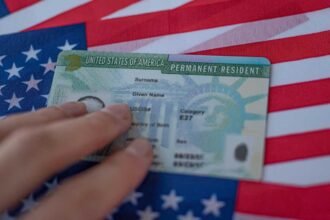Arriving in the United States as a new immigrant is an exciting milestone. However, navigating the procedures of U.S. Customs and Border Protection (CBP) at your port of entry can be daunting, especially if you are unfamiliar with the process. Understanding CBP procedures, requirements, and best practices can help ensure a smooth and stress-free entry into the country.
This comprehensive guide provides everything new immigrants need to know about U.S. CBP procedures, from preparing your documents to what to expect during the inspection process.
Overview of U.S. CBP and Its Role
U.S. Customs and Border Protection is a federal agency responsible for managing and protecting the country’s borders. For new immigrants, CBP plays a critical role at ports of entry by:
- Verifying immigration documents.
- Conducting inspections to ensure compliance with U.S. immigration and customs laws.
- Collecting declarations of goods and enforcing import restrictions.
Preparing for Your Arrival in the United States
1. Understand Your Immigration Status
Before traveling, ensure you understand the specific visa or immigration status under which you are entering the United States. Common immigration statuses include:
- Immigrant visa holders (e.g., family-sponsored or employment-based immigrants).
- Diversity Visa (DV) lottery winners.
- Refugees or asylum seekers.
Each category may have unique documentation and procedural requirements.
2. Gather Necessary Documents
Prepare a complete set of documents to present to CBP officers upon arrival. These include:
- Valid Passport: Ensure your passport is valid for at least six months beyond your intended stay (or as per the agreement between the U.S. and your country).
- Visa or Green Card: Depending on your status, bring your valid immigrant visa or green card.
- Sealed Immigration Packet: If applicable, carry the sealed packet provided by the U.S. embassy or consulate during your visa interview.
- Supporting Documents: These may include:
- Proof of financial support (e.g., Form I-864).
- Employment offer letter, if applicable.
- Evidence of family ties in the U.S.
- Medical examination records.
3. Familiarize Yourself with Customs Regulations
New immigrants must comply with U.S. customs regulations regarding what items they can bring into the country. Common restrictions include:
- Prohibited Items: Firearms, narcotics, and certain agricultural products.
- Restricted Items: Large amounts of cash (over $10,000) must be declared, as well as specific food items and medications.
4. Complete Required Forms
Before arrival, complete the necessary customs declaration forms. Most airlines provide the CBP Declaration Form 6059B during the flight. Alternatively, you may be directed to use electronic kiosks at the airport.
Arrival at the Port of Entry
Upon landing at a U.S. airport or arriving at a land border, you will undergo several CBP procedures. The following sections explain each step in detail.
1. Disembarkation and Arrival Hall
After disembarking, proceed to the CBP inspection area. Follow signs for international arrivals and join the appropriate line based on your immigration status.
- First-Time Immigrants: Typically directed to the “Visitors” or “New Immigrants” queue.
- Returning Residents: Green card holders use the “Residents” line.
2. Primary Inspection
The primary inspection is the first point of contact with a CBP officer. During this process:
Documents Reviewed:
- Your passport.
- Visa or green card.
- Sealed immigration packet (if applicable).
Questions Asked:
The officer may ask about:
- Your purpose of entry.
- Your final destination in the U.S.
- Details about your immigration status or employment.
Tips for Success:
- Be polite and concise in your answers.
- Provide truthful information.
- Have your documents organized and readily available.
3. Secondary Inspection (If Applicable)
If the CBP officer requires additional verification, you may be directed to secondary inspection. Reasons for secondary inspection include:
- Reviewing complex cases.
- Verifying sealed immigration packets.
- Addressing discrepancies in documentation.
What to Expect:
- You may need to wait while officers review your case.
- Additional questions or document requests may arise.
Tips:
- Remain calm and cooperative.
- Be prepared to provide any additional documents requested.
4. Customs Declaration and Inspection
After completing the immigration inspection, proceed to customs. CBP officers will review your declaration form and may inspect your luggage.
Key Points:
- Declare all items accurately, including cash, food, or gifts.
- Follow import regulations to avoid fines or confiscation.
5. Stamping of Documents
Once cleared, CBP will:
- Stamp your passport with the date of entry and visa classification.
- Provide instructions for future steps, if necessary (e.g., Social Security number application or permanent resident card delivery).
After Clearing CBP Procedures
1. Collect Your Luggage
Proceed to the baggage claim area to collect your luggage. Ensure all items match your customs declaration.
2. Connect to Domestic Flights
If you have a connecting domestic flight, recheck your luggage and proceed to your departure gate.
3. Settle in the U.S.
Once you reach your final destination, take steps to complete the post-arrival requirements of your immigration process.
Key Steps:
- Apply for a Social Security number, if applicable.
- Update your address with U.S. Citizenship and Immigration Services (USCIS).
- Open a bank account and secure housing.
Common Challenges During CBP Procedures and How to Overcome Them
1. Language Barriers
If English is not your first language, communicating with CBP officers may be challenging.
Solution:
- Request a translator or interpreter if needed.
- Carry translated copies of key documents.
2. Missing Documents
Failing to bring required documents can lead to delays or denial of entry.
Solution:
- Double-check all required documents before departure.
- Keep both physical and digital copies of essential paperwork.
3. Lengthy Wait Times
Busy airports or additional scrutiny can result in long wait times.
Solution:
- Plan sufficient time for layovers.
- Stay patient and cooperative during inspections.
4. Misunderstandings or Errors
Mistakes in your immigration documents or customs declaration can lead to complications.
Solution:
- Notify the CBP officer immediately if you notice errors.
- Keep a record of all official communications and instructions.
Tips for a Smooth CBP Experience
- Arrive Prepared:
- Have all required documents organized and accessible.
- Stay Informed:
- Familiarize yourself with CBP procedures and regulations before your trip.
- Remain Calm:
- Stay composed and cooperative during inspections.
- Ask Questions:
- If you are unsure about any procedure, politely ask the CBP officer for clarification.
- Declare Everything:
- Avoid penalties by accurately declaring all items, especially cash, food, or restricted goods.
Frequently Asked Questions (FAQs)
1. What Should I Do If My Immigration Packet Is Missing?
Contact the U.S. embassy or consulate where your visa was issued to request a replacement.
2. Can I Bring Food Items into the U.S.?
Certain food items are prohibited or restricted. Check the CBP website for a list of permitted items before packing.
3. What Happens If I Miss My Connecting Flight?
If CBP procedures delay you, contact your airline for assistance in rebooking your flight.
4. Can I Travel Domestically After Entry?
Yes, once you clear CBP, you are free to travel within the United States.
5. What Should I Do If My Entry Is Denied?
CBP will explain the reasons for denial and your options for appeal or reapplication.
Conclusion
Navigating U.S. CBP procedures is a critical step for new immigrants entering the United States. By understanding the requirements, preparing your documents, and following best practices during inspections, you can ensure a smooth entry experience. Remember to stay informed, be truthful in your declarations, and remain patient throughout the process. A well-prepared approach will set the foundation for a successful start to your new life in the United States.



